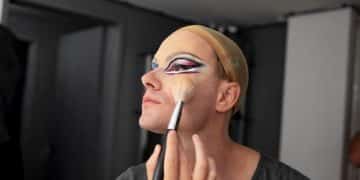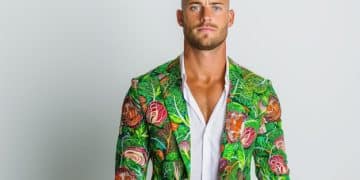Non-Binary Style Evolution: A History of Gender-Neutral Fashion
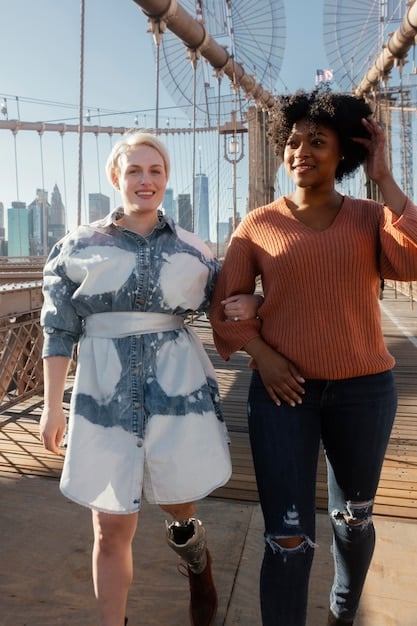
Non-binary style evolution traces the historical journey of gender-neutral fashion, examining how clothing became less defined by traditional gender norms and more about personal expression, reflecting changing societal attitudes and inclusivity.
The world of fashion is constantly evolving, and one of the most significant shifts has been the rise of gender-neutral and non-binary styles. This evolution is more than just a trend; it’s a reflection of changing societal attitudes towards gender and identity. Understanding the story of non-binary style evolution allows us to appreciate how far we’ve come and the ongoing journey toward inclusivity and self-expression in clothing.
The Foundations: Early Gender-Neutral Expressions
The concept of clothing being strictly divided by gender is a relatively recent phenomenon. Throughout history, many cultures have embraced clothing styles that blurred these lines. Understanding where gender-neutral fashion started helps us to see how our current styles have been shaped.
Historical Clothing Norms
Historically, clothing was often more about practicality and status than strict gender conformity. Certain garments were worn by both men and women, particularly in working-class settings. These early examples show a less rigid approach to how clothing defined identity.
Cultural Examples of Gender Fluidity
Many indigenous cultures around the world have traditions of gender fluidity in dress. These cultures often showcase how clothing can represent identity beyond the binary, challenging the norms that Western societies have imposed.
- Ancient Rome: Togas were worn by both men and women, with variations indicating status more than gender.
- Japanese Kimonos: While different styles exist for men and women, the kimono itself transcends strict gender boundaries.
- Scottish Kilts: Traditionally worn by men, the kilt challenges typical Western ideas of masculinity in dress.
These historical and cultural examples demonstrate that the idea of gender-neutral clothing isn’t new. It’s a theme that reappears throughout history, adapting to different societies and values.
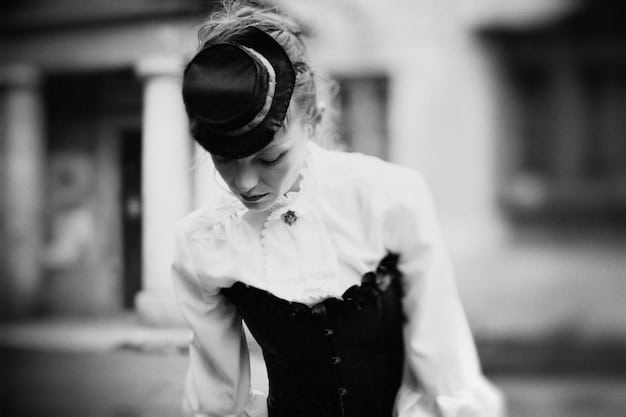
The 20th Century: Challenging Gender Norms
The 20th century saw significant shifts in fashion as women increasingly adopted traditionally masculine styles and challenged established gender norms. This period marked a turning point, paving the way for the gender-neutral styles we see today.
The Flapper Era
The 1920s saw women rejecting Victorian-era constraints, adopting looser silhouettes and shorter hemlines. This rejection of traditional femininity was a bold step towards greater freedom of expression.
The Influence of Menswear
Designers like Coco Chanel incorporated menswear elements into women’s fashion, creating iconic pieces like the pantsuit. This blending of masculine and feminine styles challenged traditional gender roles in dress.
- Marlene Dietrich: A style icon who famously wore suits and other traditionally masculine attire, defying gender expectations.
- Katharine Hepburn: Known for her preference for pants and practical clothing, she helped normalize women wearing menswear.
- The “Rosie the Riveter” look: During World War II, women in factories often wore overalls and work clothes, further blurring gender lines in fashion.
These shifts in the 20th century were about more than just clothing; they represented a broader movement towards gender equality and freedom of expression. Fashion became a tool for challenging societal norms and pushing boundaries.
The Rise of Androgyny: A Blurring of Lines
As the 20th century progressed, androgyny became a more prominent force in fashion, challenging the strict divide between masculine and feminine aesthetics. This movement celebrated the blending of styles and the rejection of traditional gender markers.
Key Moments in Androgynous Fashion
The androgynous movement gained momentum in the latter half of the 20th century, with influential figures embracing styles that defied gender expectations. These moments helped to normalize androgynous looks in mainstream culture.
Designers Who Championed Androgyny
Certain designers played a pivotal role in promoting androgynous fashion, creating collections that blurred gender lines and celebrated individuality. Their work helped to shape the androgynous aesthetic we know today.
- Yves Saint Laurent: Known for Le Smoking tuxedo suit for women, YSL blurred the lines between masculine and feminine.
- Rei Kawakubo (Comme des Garçons): Her deconstructed and avant-garde designs challenged traditional notions of beauty and gender.
- Giorgio Armani: Revolutionized menswear with softer tailoring and a more relaxed silhouette, influencing both men’s and women’s fashion.
The rise of androgyny in fashion was a cultural statement, reflecting changing attitudes toward gender and identity. It paved the way for the more inclusive and diverse styles we see today, where personal expression takes precedence over traditional gender norms.
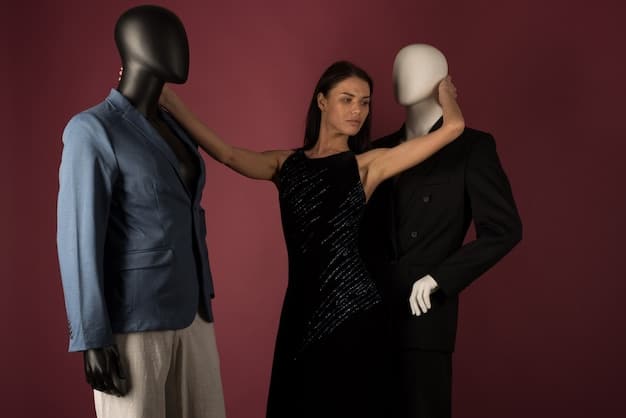
The 21st Century: Non-Binary Style Takes Center Stage
The 21st century has witnessed the rise of non-binary style as a distinct and recognized form of fashion. This movement celebrates individuality and self-expression, moving beyond traditional gender norms to create a more inclusive and diverse fashion landscape.
The Influence of Social Media
Social media platforms have played a crucial role in amplifying non-binary voices and showcasing diverse styles. Influencers and activists use these platforms to promote inclusivity and challenge traditional fashion industry norms.
Brands Embracing Non-Binary Fashion
Many brands are now recognizing the importance of inclusive sizing and gender-neutral designs. This shift signals a broader acceptance of non-binary identities and a commitment to serving a more diverse customer base.
- Telfar: Known for its accessible and inclusive designs, Telfar has become a staple in non-binary fashion.
- One DNA: This brand focuses on creating timeless, gender-neutral pieces that prioritize comfort and versatility.
- Radimo: Their collections often feature fluid silhouettes and non-traditional cuts, embracing a genderless aesthetic.
The rise of non-binary style in the 21st century is a testament to the growing recognition and acceptance of diverse gender identities. Fashion is becoming more about personal expression and less about conforming to outdated norms, creating space for everyone to feel seen and represented.
Key Elements of Non-Binary Fashion
Non-binary fashion encompasses a wide range of styles and aesthetics, all united by a common goal: to transcend traditional gender norms and celebrate individuality. Understanding the key elements of this style can help anyone explore and express their own unique identity.
Fluid Silhouettes
Clothing with loose, flowing shapes is a staple of non-binary fashion. These silhouettes avoid emphasizing traditional gender cues, allowing for comfortable and expressive styles.
Neutral Color Palettes
Many non-binary styles incorporate neutral colors like black, white, gray, and earth tones. These colors create a versatile backdrop for personal expression and avoid stereotypical gender associations.
Accessorizing Strategically
Accessories can play a significant role in non-binary fashion, allowing individuals to add personal touches and express their identity. From jewelry to hats, accessories can transform an outfit and communicate individuality.
The Future of Gender-Neutral Fashion
As we look to the future, the movement towards gender-neutral fashion is poised to continue growing and evolving. With increased visibility and acceptance, we can expect to see even more innovation and inclusivity in the world of fashion.
Continued Inclusivity
The industry will likely continue to expand its size ranges and offer more diverse representation in advertising and marketing. This ongoing focus on inclusivity will help to create a more welcoming and affirming space for all individuals.
Technological Innovations
New technologies, like virtual fashion and personalized design, could further revolutionize gender-neutral clothing. These advancements may allow individuals to create custom pieces that perfectly reflect their identity and style.
- 3D-printed clothing: Customizable and sustainable options for creating unique, gender-neutral designs.
- Virtual reality fashion shows: Showcasing diverse models and inclusive designs to a global audience.
- AI-powered style assistants: Providing personalized recommendations for gender-neutral outfits based on individual preferences.
The future of gender-neutral fashion is bright, with the potential for even greater inclusivity, innovation, and self-expression. As societal attitudes continue to evolve, fashion will undoubtedly play a crucial role in shaping a more accepting and diverse world.
| Key Point | Brief Description |
|---|---|
| 👗 Early Fluidity | Historically, clothing wasn’t strictly gendered; many cultures had gender-fluid styles. |
| 👖 20th-Century Shift | Women began adopting menswear, challenging norms and pushing for equality. |
| ✨ Androgyny’s Rise | Androgyny blurred gender lines, celebrated blending, and challenged traditional aesthetics. |
| 🌐 21st-Century Style | Non-binary style takes center stage, celebrating individuality and inclusivity. |
Frequently Asked Questions
▼
Non-binary style is a form of fashion that transcends traditional gender norms, allowing individuals to express themselves authentically without conforming to societal expectations. It focuses on comfort and personal preference.
▼
Social media has amplified non-binary voices and showcased diverse styles, creating a platform for influencers and activists to challenge traditional fashion industry norms and promote inclusivity.
▼
Key elements include fluid silhouettes, neutral color palettes, and strategic accessorizing. These elements help individuals express their identity and move beyond traditional gender markers in clothing.
▼
Several brands, like Telfar, One DNA, and Radimo, focus on inclusive sizing and gender-neutral designs. They prioritize comfort, versatility, and self-expression in their collections.
▼
The future of gender-neutral fashion promises continued inclusivity, technological innovations like 3D-printed clothing, and greater acceptance. These advancements will allow for more personalized and diverse styles.
Conclusion
The evolution of non-binary style is a journey through history, culture, and social change. From early examples of gender fluidity to the rise of androgyny and the current celebration of non-binary identities, fashion continues to evolve, reflecting our ever-changing understanding of gender and self-expression. As we look to the future, the possibilities for gender-neutral fashion are limitless, promising a more inclusive and diverse world for all.



